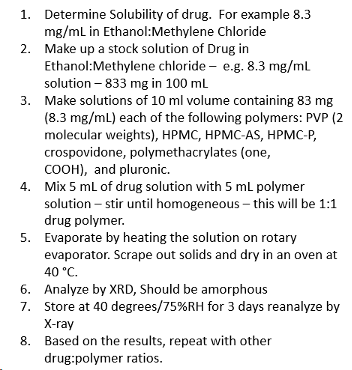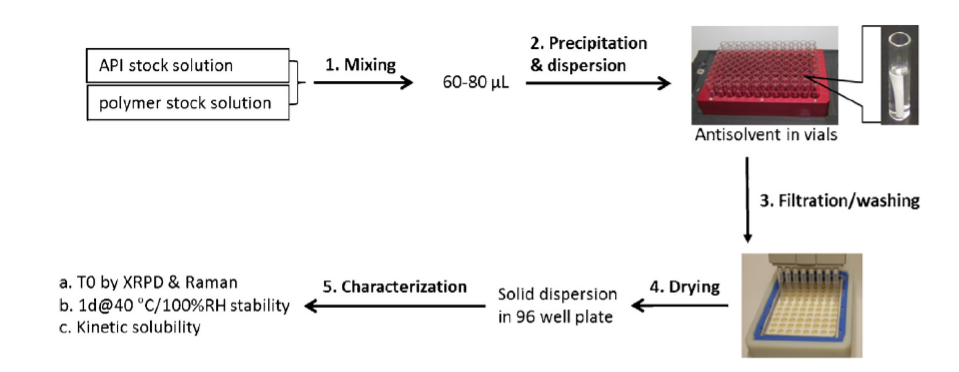Improved Pharma offers at least five types of co-processed API screens. They are briefly described below.
1) A solvent-based amorphous co-processing screen involves dissolving the drug and polymer in an organic solvent, followed by flash evaporation. The recovered solids are analyzed by XRPD to determine if the sample is X-ray amorphous. An example of a typical experimental approach is shown below.

2) A miniaturized co-precipitation screen based on the Zelboraf process described by Shah and coworkers (J. Pharm. Sci. 102(3) (2013) 967-981) is an excellent approach for “brick-dust” compounds that cannot be processed by spray drying or melt extrusion. A 96-well platform is used for miniaturized co-precipitation and provides a high-throughput approach to aid in the selection of polymer type, drug loading, and antisolvent to solvent ratio. More about this approach can be found in International Journal of Pharmaceutics 450 (2013) 53-62.

3) A melt-based co-processing screen can be done by blending the drug and additive and using a DSC to run melt/quench experiments, then scaling up promising systems to measure by XRPD. One-week stability at 40⁰C /75% RH followed by XRPD and DSC analysis can provide a quick read of success. Dissolution testing rounds out the assessment. For material-limited systems, a melt-based screen can be conducted on a microscale.
4) A milling-based co-processing screen involves blending the drug and additive, ball milling for 15 minutes, and then analyzing the mixture by XRPD. Promising X-ray amorphous materials can be scaled up and placed on stability for one week at 40/75 followed by XRPD, DSC, and dissolution testing.
5) One last example of a co-processing screen is based on solid lipid nanoparticles. Cationic lipid nanoparticles and anionic drugs and dissolved in ethanol, then injected into aqueous buffer to form nanoparticles. Alternatively, a mixer can be used. DLS is used to assess the particle size, and stability is assessed by measuring the particle growth two days later. More about solid lipid nanoparticles can be found here.
